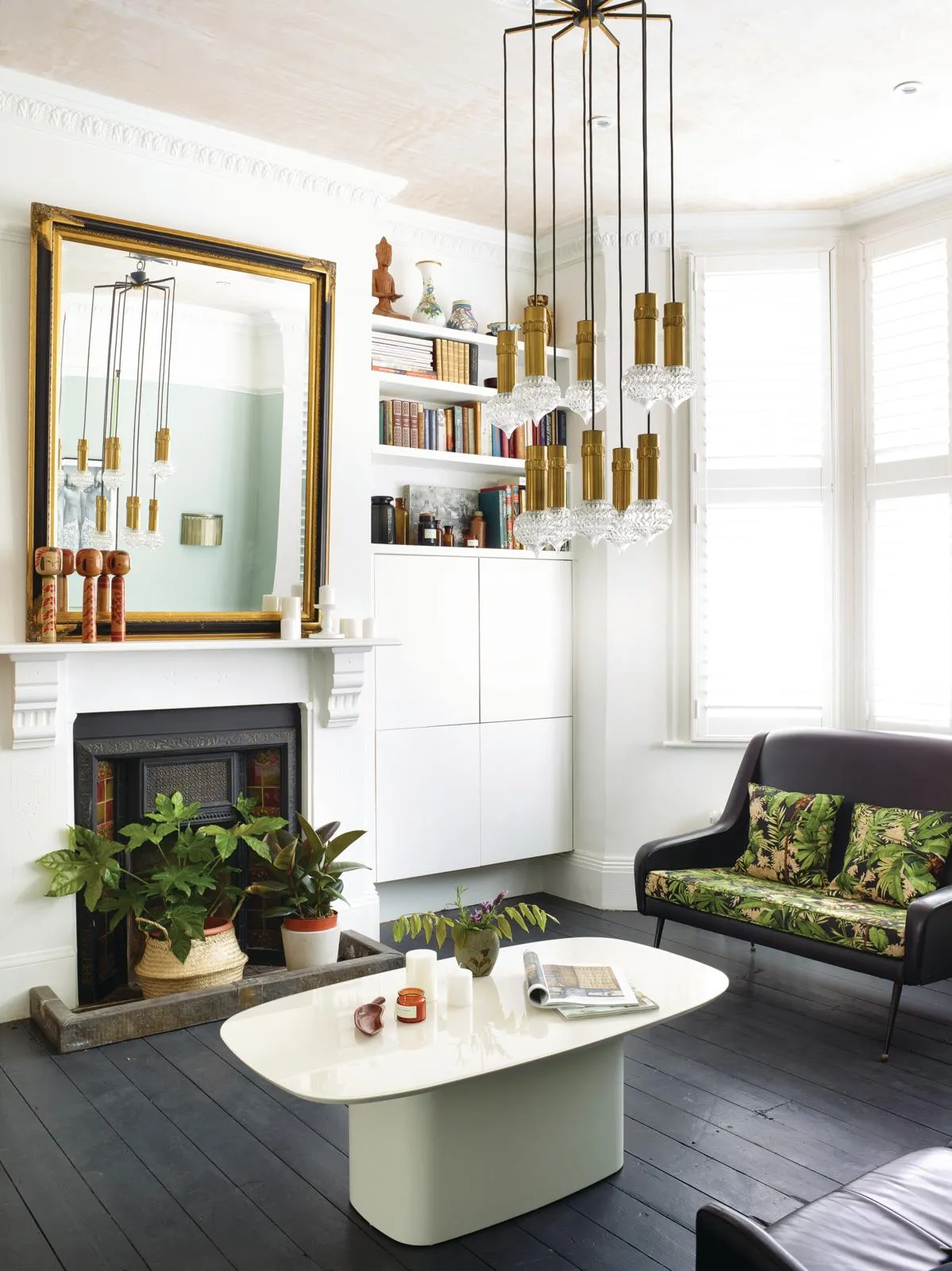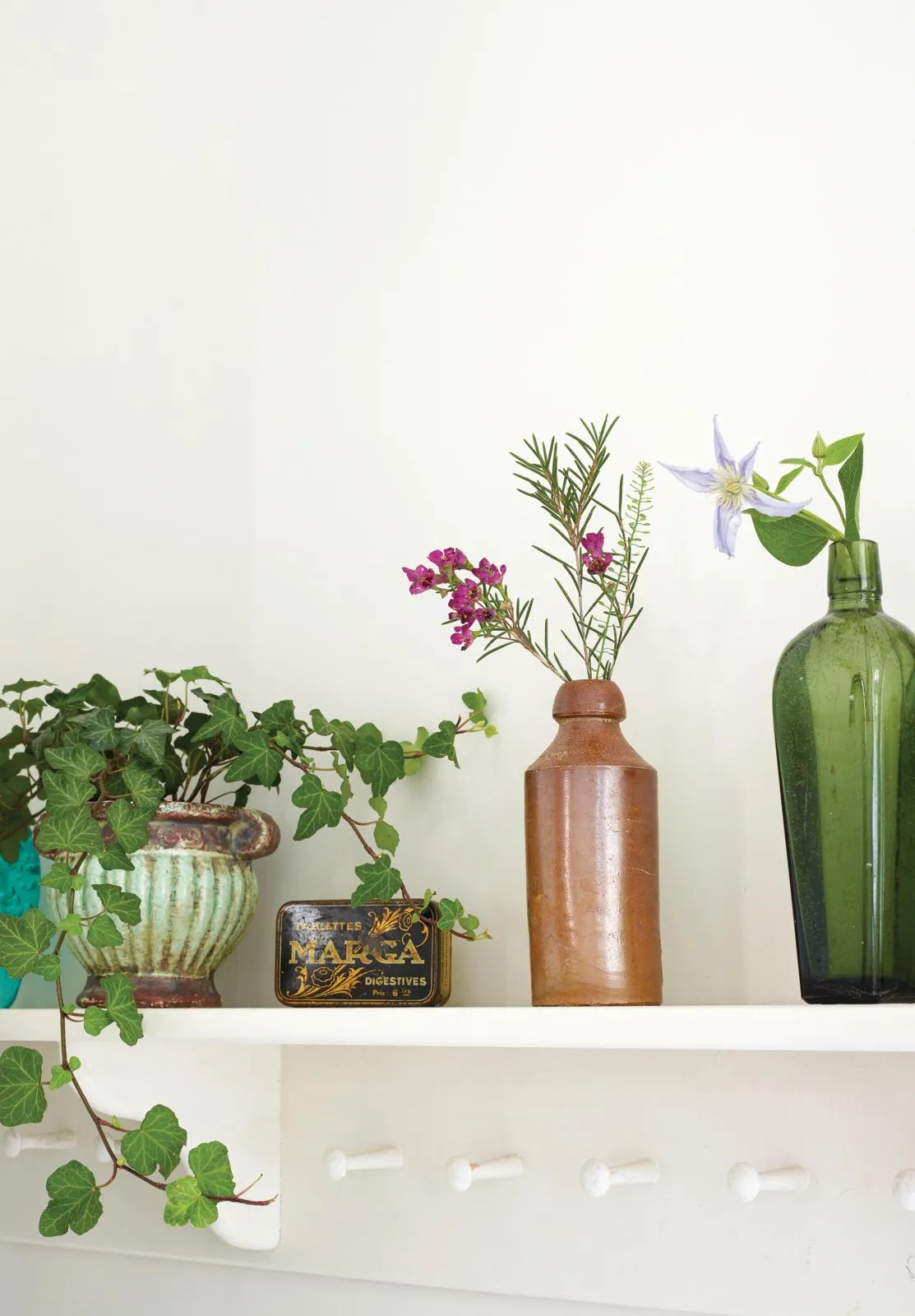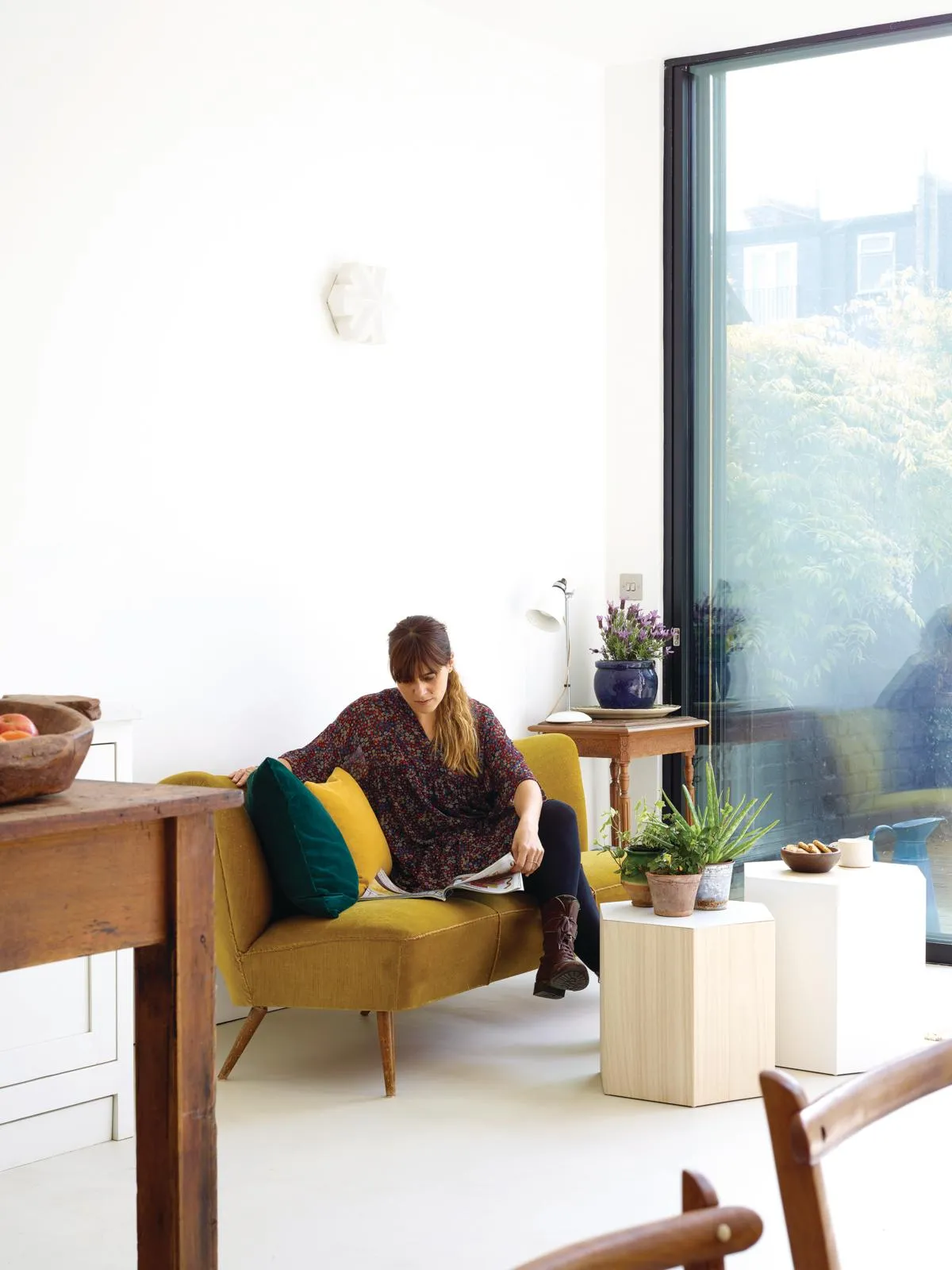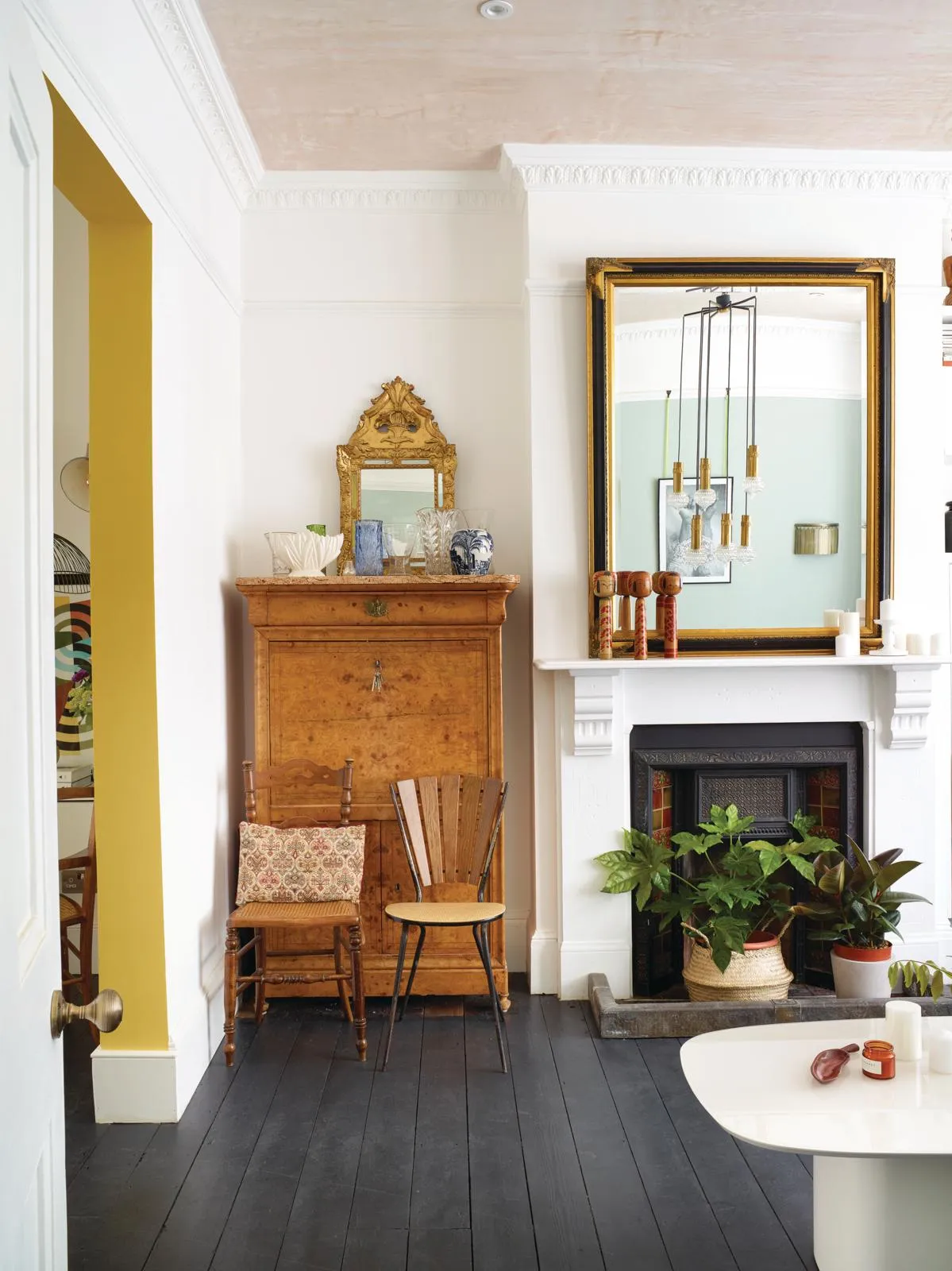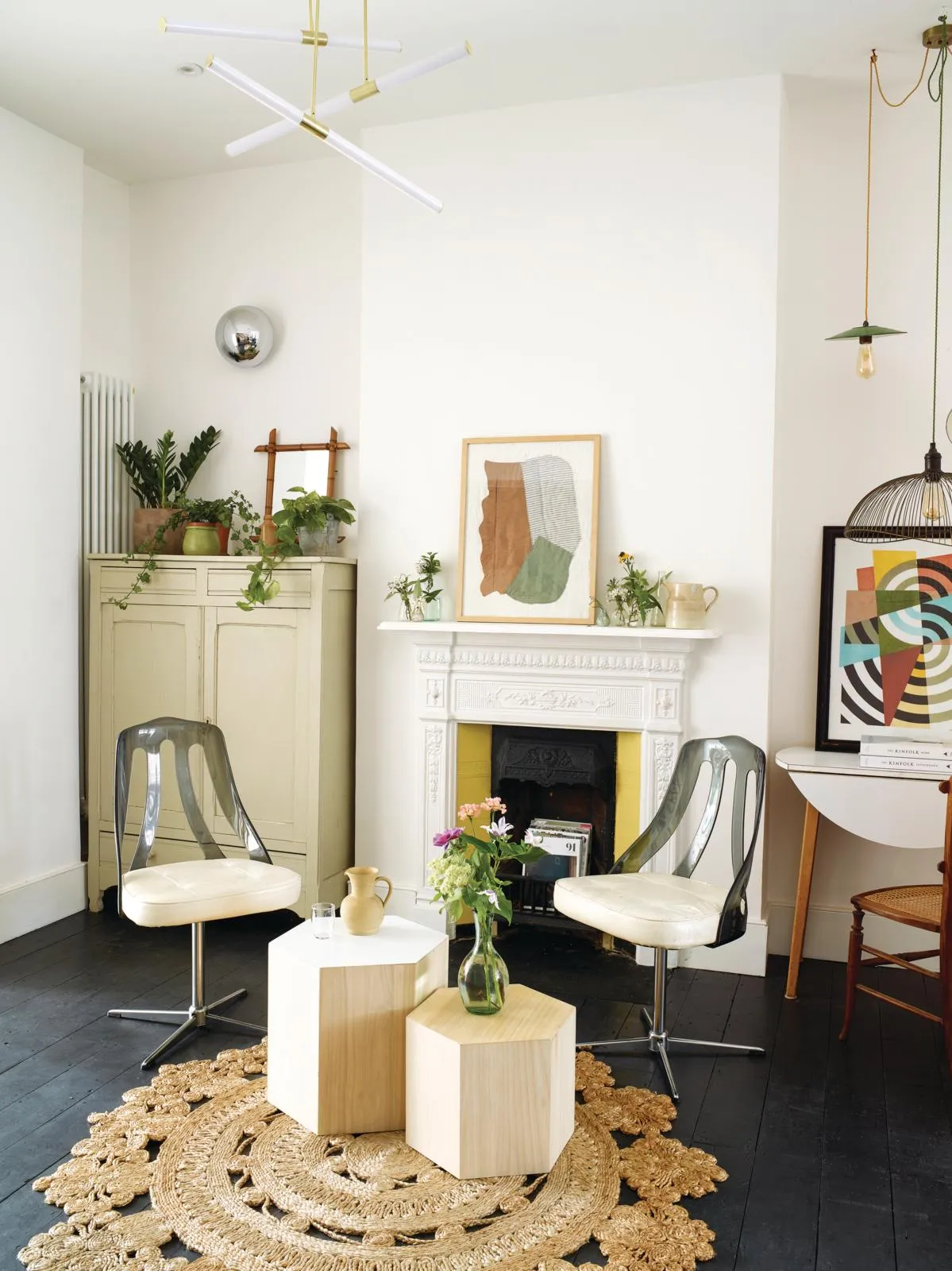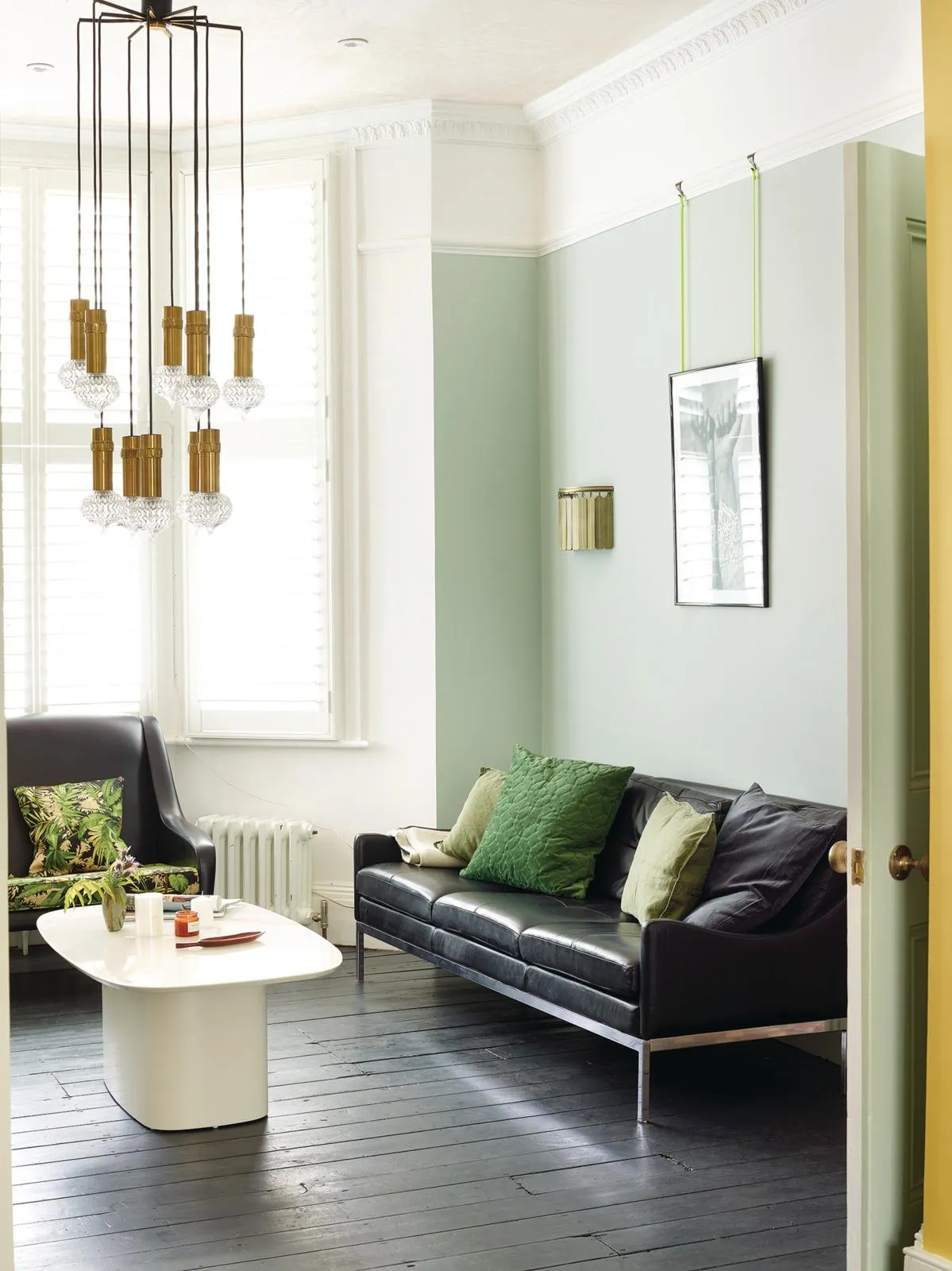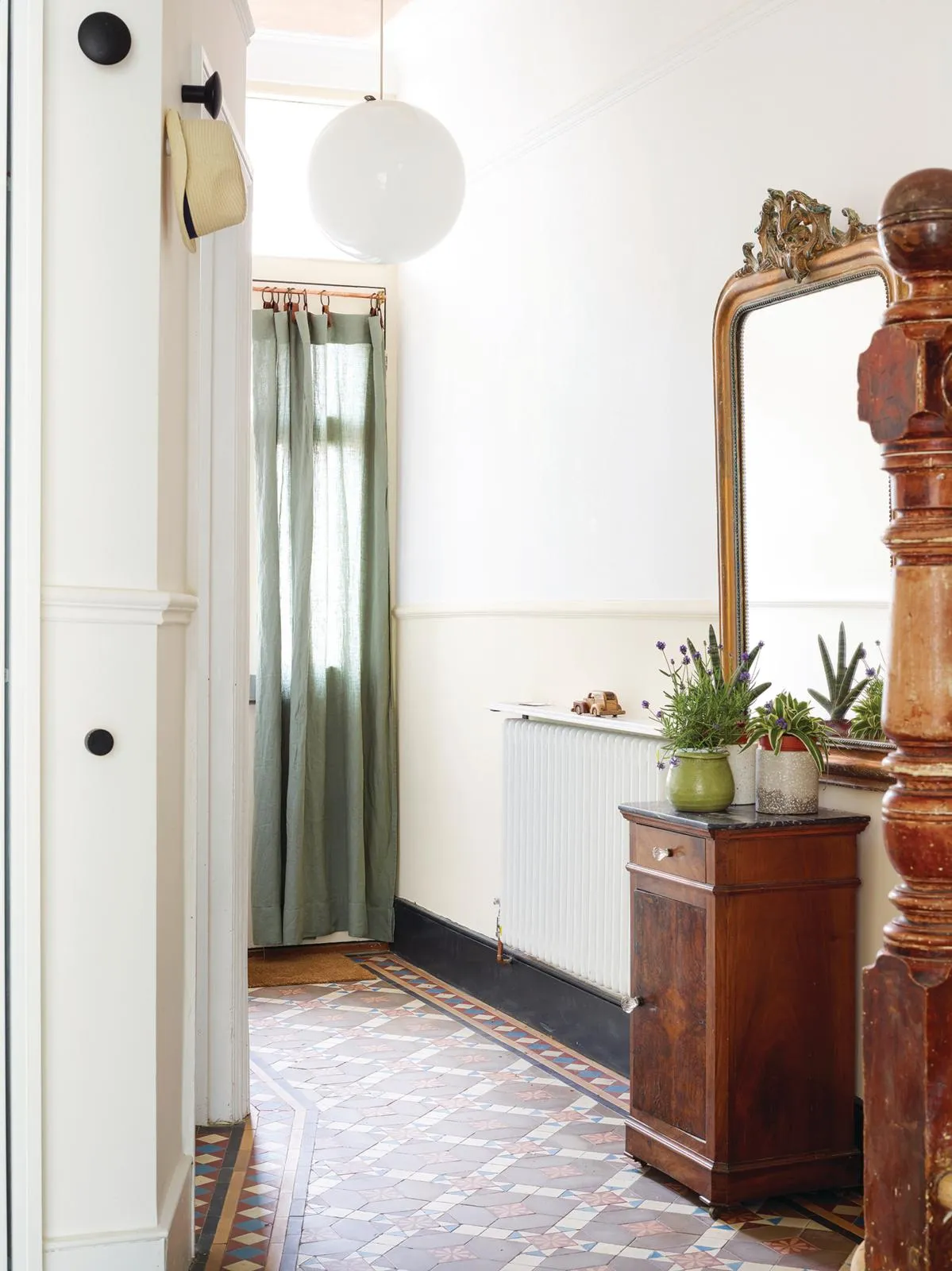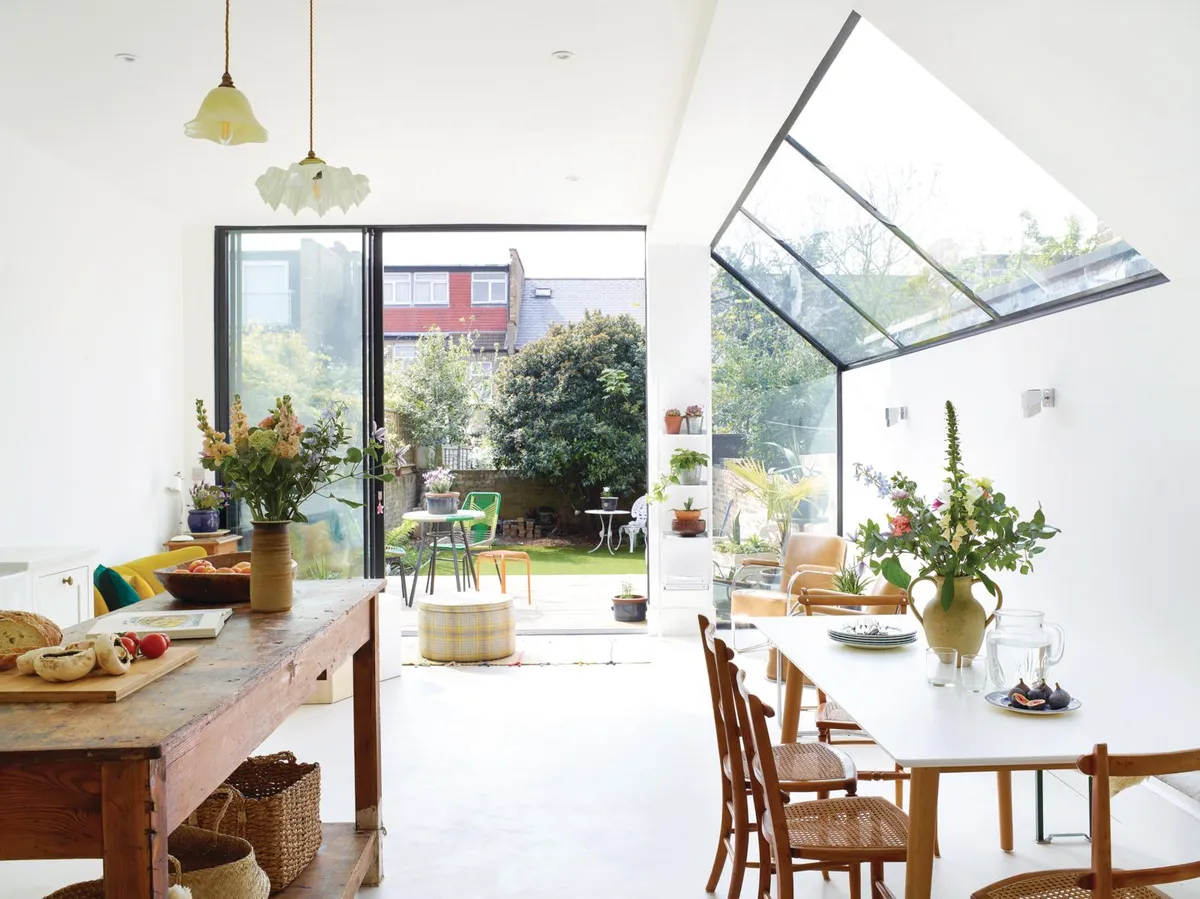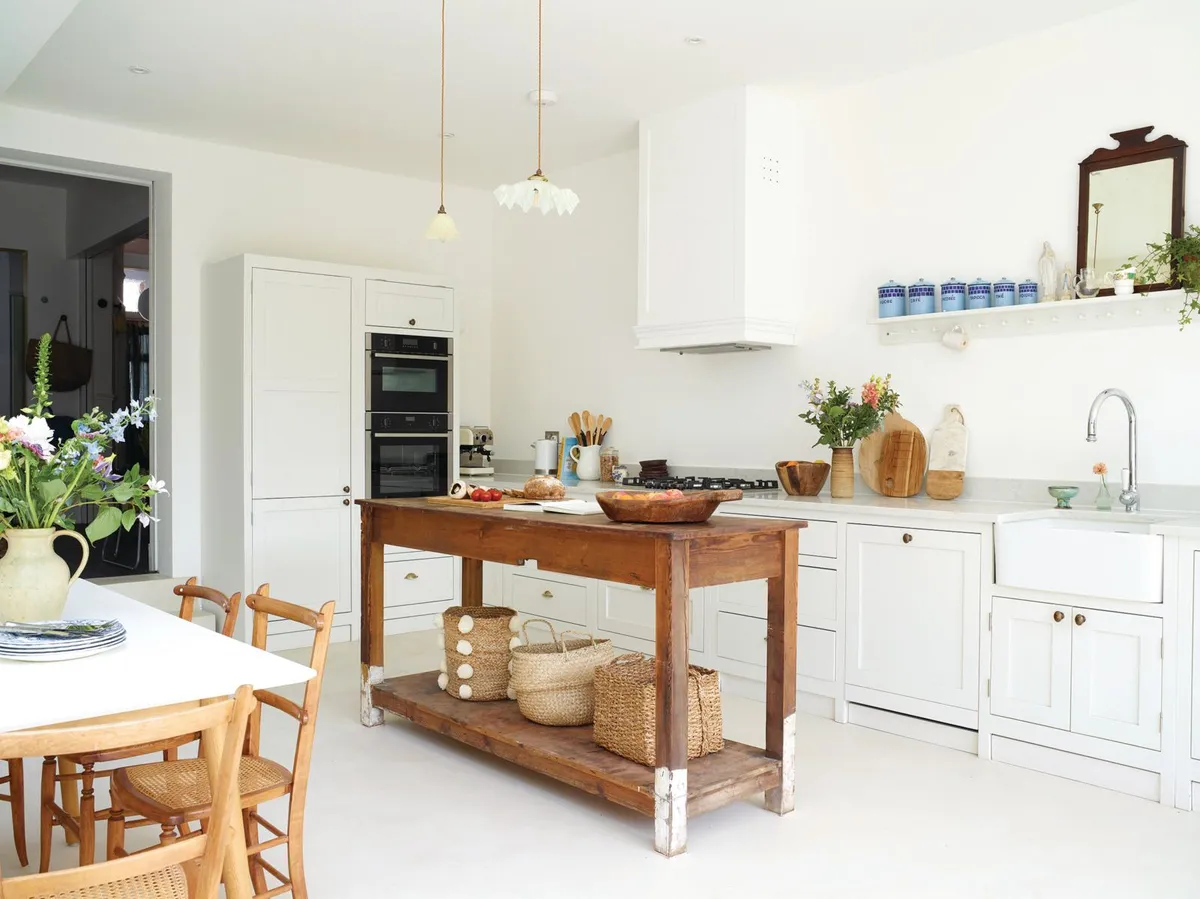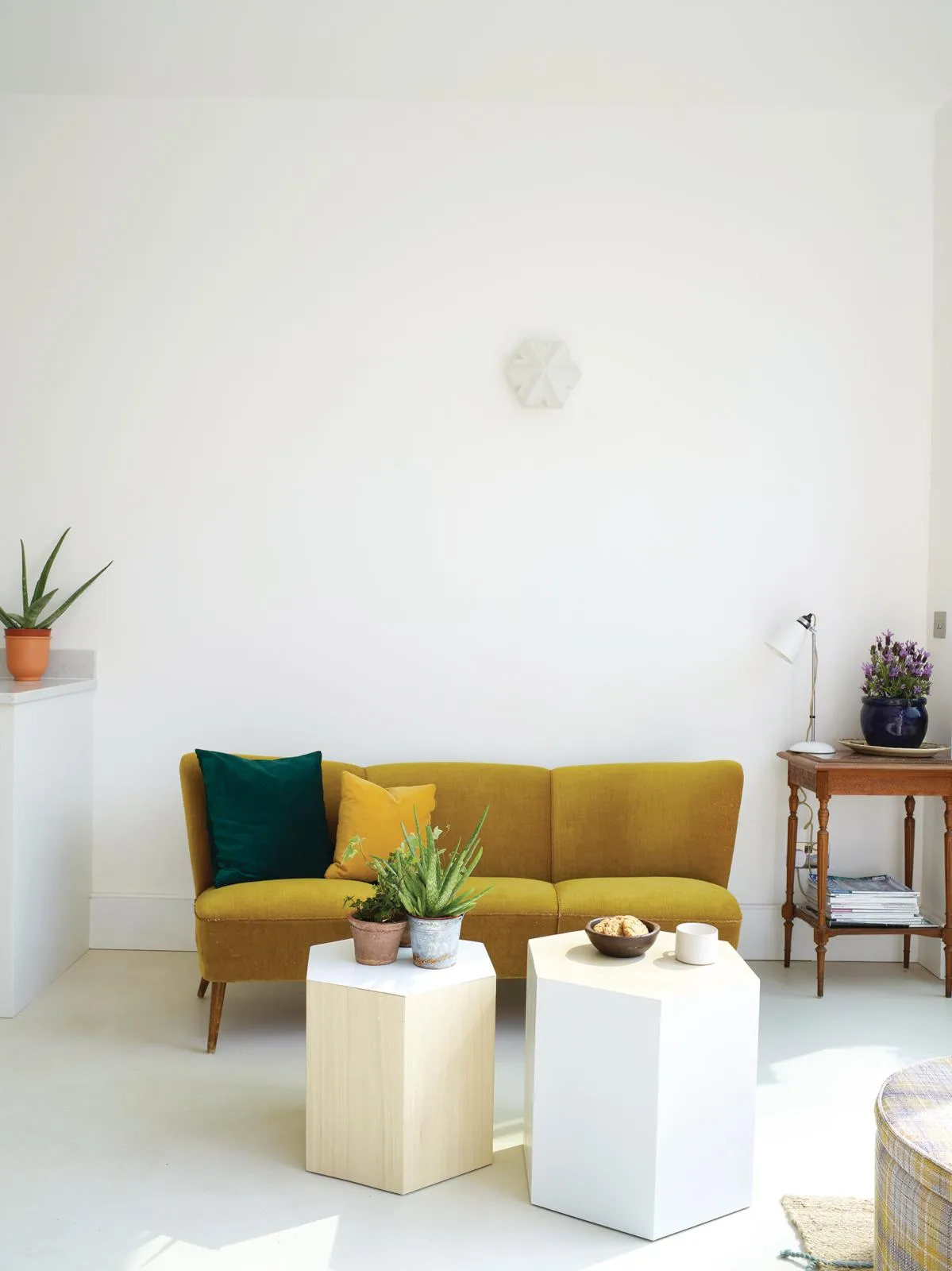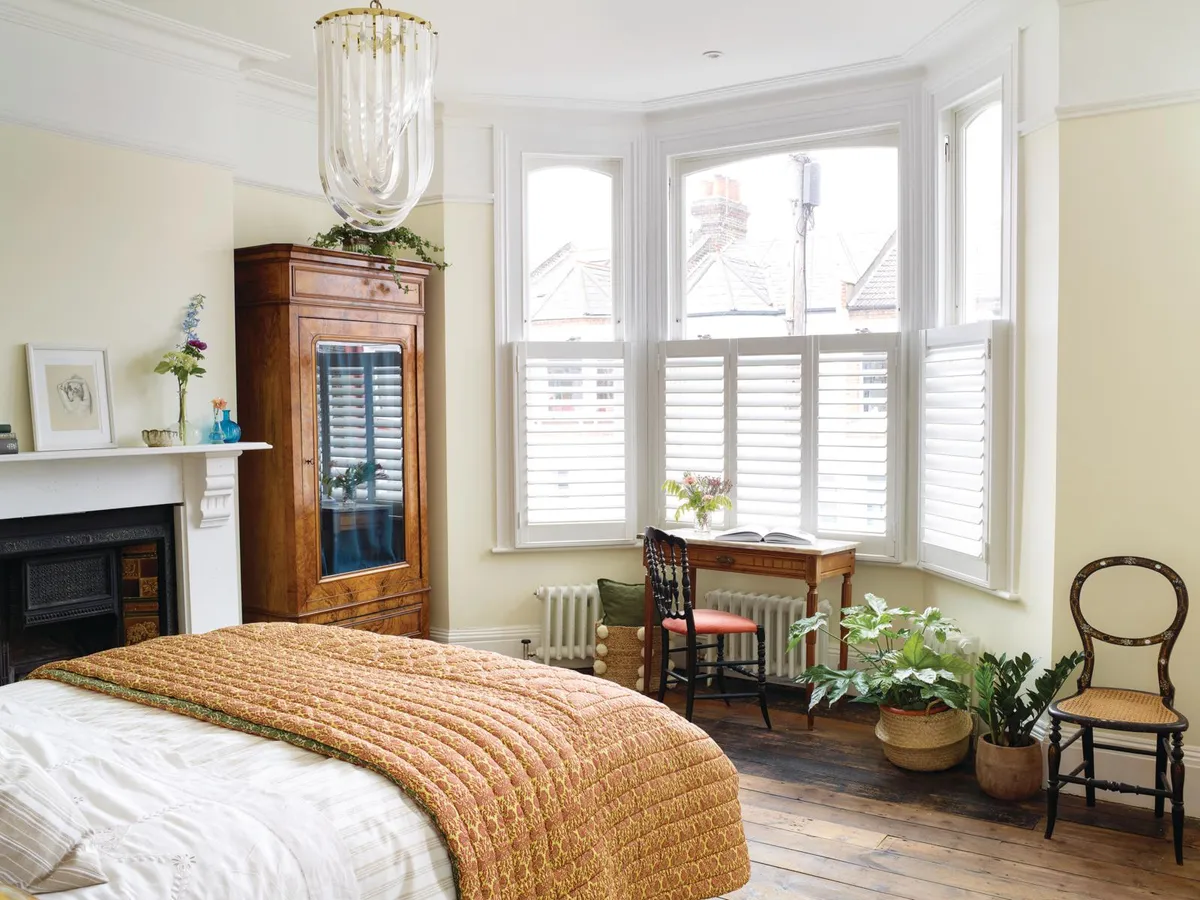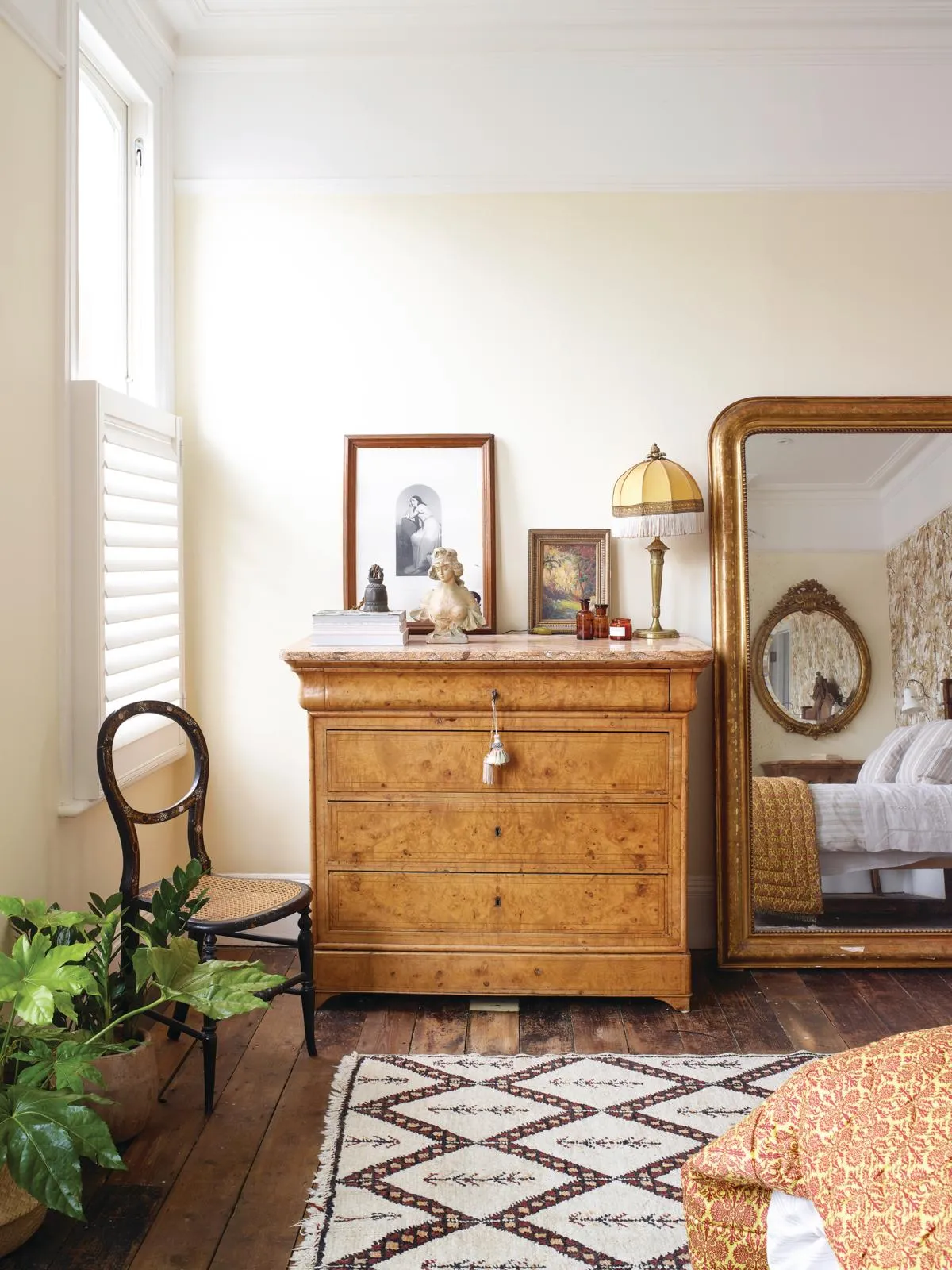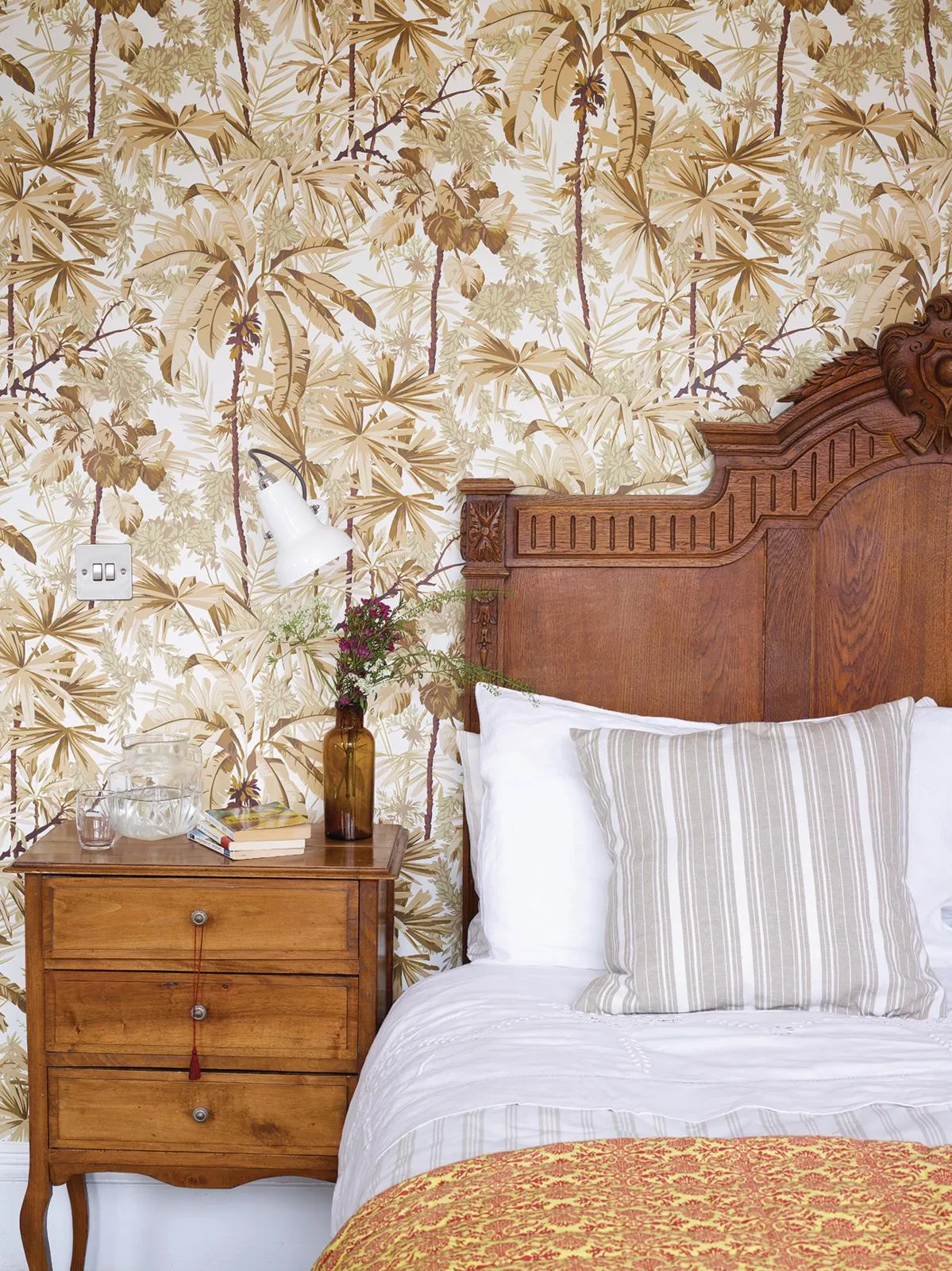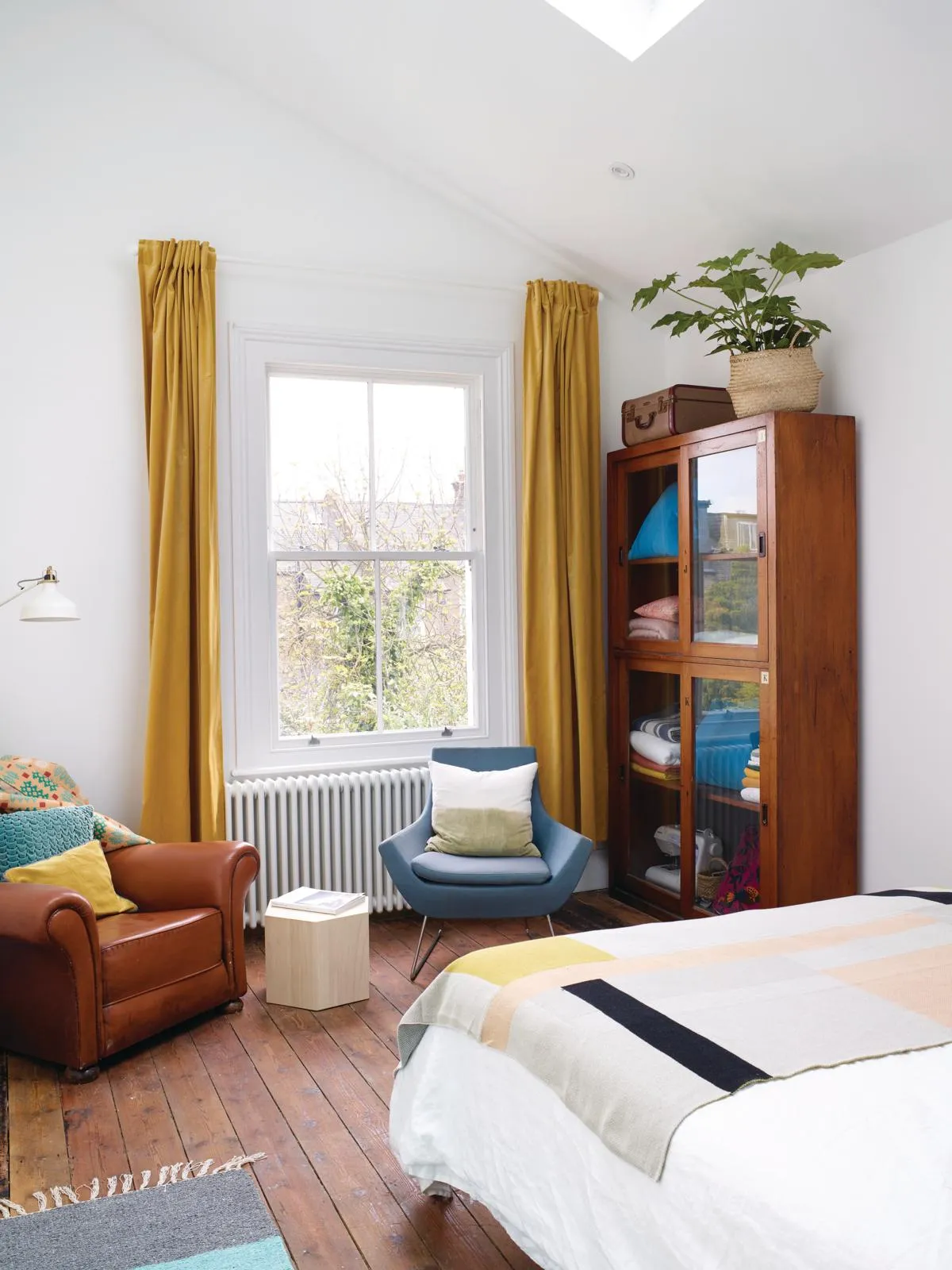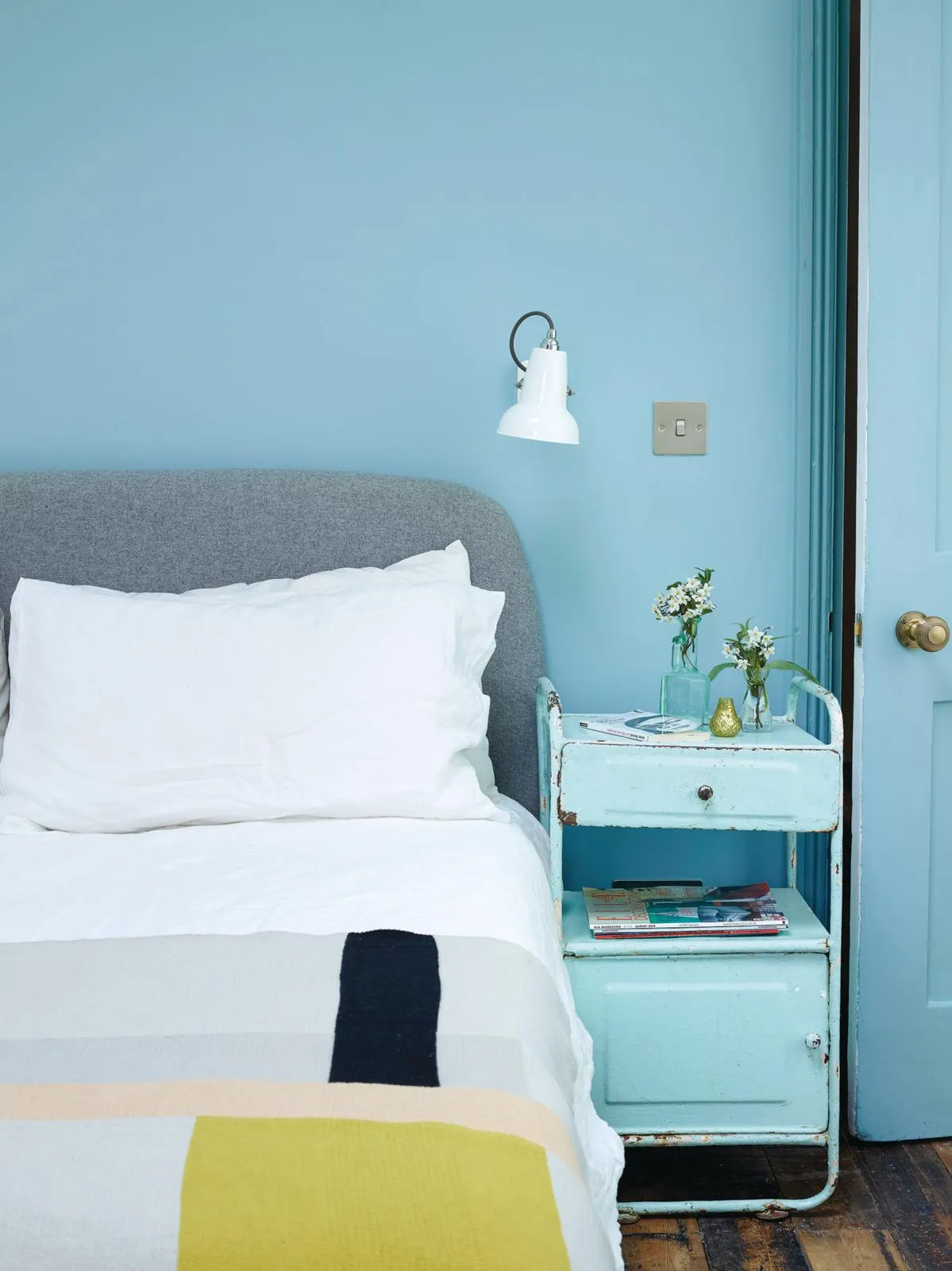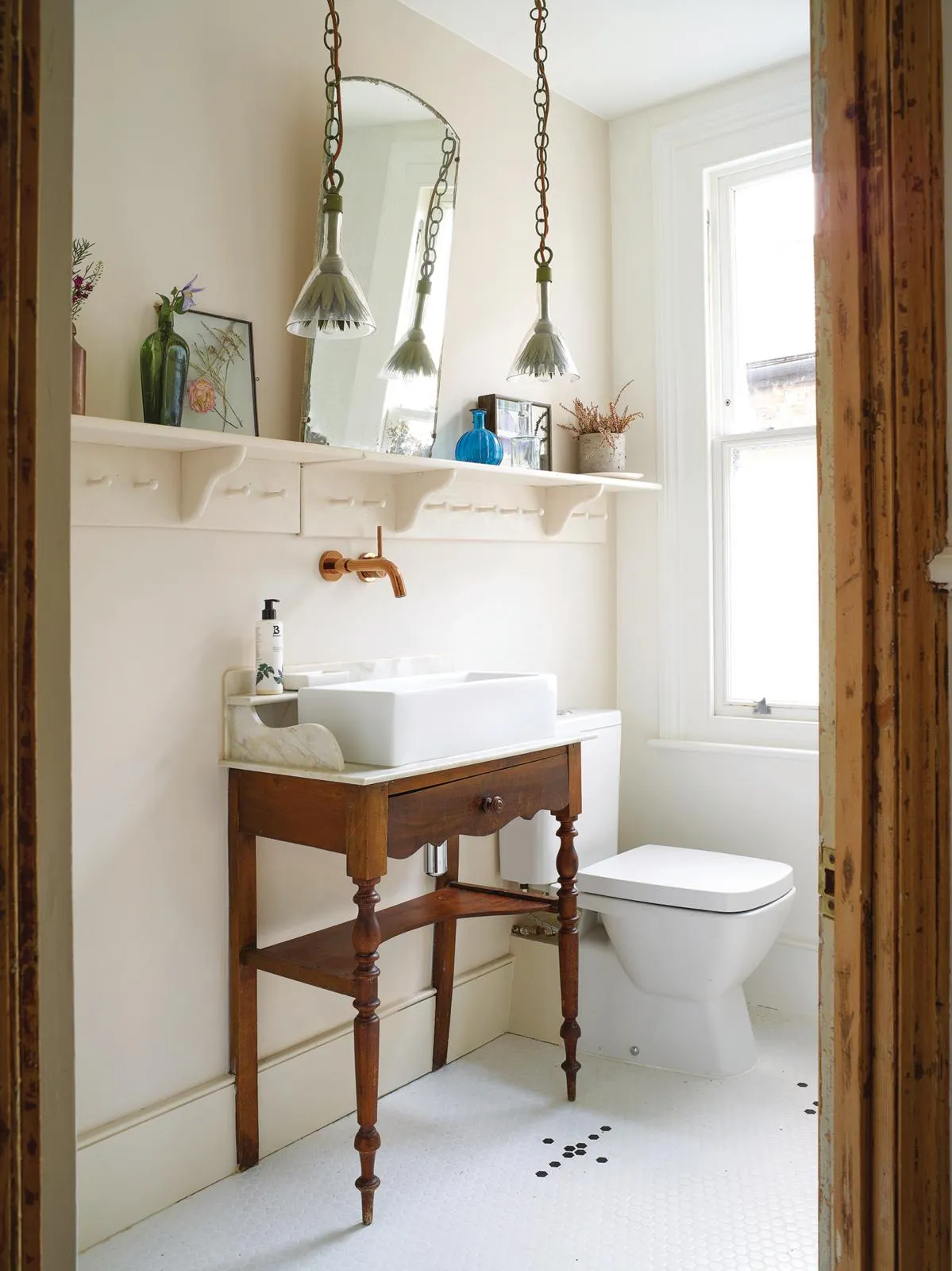French-born Emily was introduced to her family’s tradition of combing small village brocantes and larger flea markets at a young age, she says. An experience that has clearly been put to good use: her north-west London home, which she shares with her husband, Nicolas and their two sons, is filled with characterful flea-market finds.
‘My mother taught me well,’ she says, ‘and I still love the feeling of arriving at a market and wondering what I might find.’ The house is also furnished with interesting pieces that have been passed down by her French family.
You might also like find out how Leanne renovated her Victorian terrace home
‘When my parents come and stay it’s really nice for them to be surrounded by things that have an emotional attachment for them. There’s a nice circularity to keeping it in the family,’ she says.
A veneered chest of drawers in one of the bedrooms and a dainty lamp that belonged to her grandmother, a selection of vintage glassware from her mother’s collection and a pollen-yellow velvet 1950s sofa are among a number of pieces of furniture that have crossed the Channel.
Alongside them, Emily has gradually added items bought in the UK, mostly from specialist dealers and weekly visits to Golborne Road market, which is close to Emily’s home.
An old cutting table from a fabric mill serves as a kitchen island, complete with its own nips, tucks and marks of wear, which the couple picked up at a car-boot sale.
‘Nicolas also comes on trips to fairs, markets and junk shops. We make a good team,’ Emily explains. Their collecting ethos is to remain open to whatever catches their eye, rather than sticking to one narrow historical period. ‘I think collecting in this way helps to create rooms that aren’t uniform,’ she says.
You might also like the UK's best antiques and vintage shops
When they moved in, the house was almost untouched and most of the late Victorian features were intact. ‘Unusually, it had been in the same family since the 1890s,’ says Emily, adding that she’d never seen a house that was so unmodernised. ‘From the first time we viewed it, we just got a really good feeling. The house had a huge amount of soul.’
Even though some of the bedrooms had been rented out to lodgers after the Second World War, no partition walls had been put up to divide rooms. Everything was as it had been when the house was first built.
‘We fell in love with all the original details, but the house was also crying out to be reloved,’ Emily says. They began by knocking through the two ground-floor living spaces and added an extension at the back, which gets lots of light.
‘The garden is south-facing and with the glazed extension this space feels almost Mediterranean,’ she smiles. Although the renovation included an extension, elsewhere it focused on retaining the mouldings, skirting boards and, of course, the classic encaustic tiles in the hallway.
Emily and Nicolas did a lot of the work themselves and, throughout their careful restoration, they tried to retain what Emily calls the ‘raw edges’ of the house. The ceiling in the front living room was left as bare pink-tinged plaster: ‘I think it’s a lovely colour and I regret not leaving other replastered areas unpainted,’ she muses.
As they scraped paint off the woodwork and pulled up carpets, the couple also made an interesting discovery. ‘Under one carpet we found a little note written by a child – a reminder that this house has been the backdrop for many stories over the years,’ says Emily.
You might also like Annie Sloan's colourful Victorian home
‘Thinking about the lives lived here, through times of hardship and joy, war and peace, has made me reflect on our own lives. It gives one a new perspective.’
Pattern is a further layer that brings warmth and personality to their home and, true to her style, Emily has mixed traditional wallpapers by Morris & Co with a modern rework of a 1970s-style palm print by Sarah Mitchenall. But she has also consciously left plenty of uncluttered walls in between the patterns to allow spaces to breathe.
‘As a collector, it’s hard to resist bringing more pieces and patterns into your home. But I’ve also learned the value of white space,’ she says. ‘It creates a calm environment for special finds.’
